Watch Top 10 Tourist Attractions in London
Please subscribe on "World Guide" channnel on Youtube at youtube.com/c/WorldGuide
Tower of London
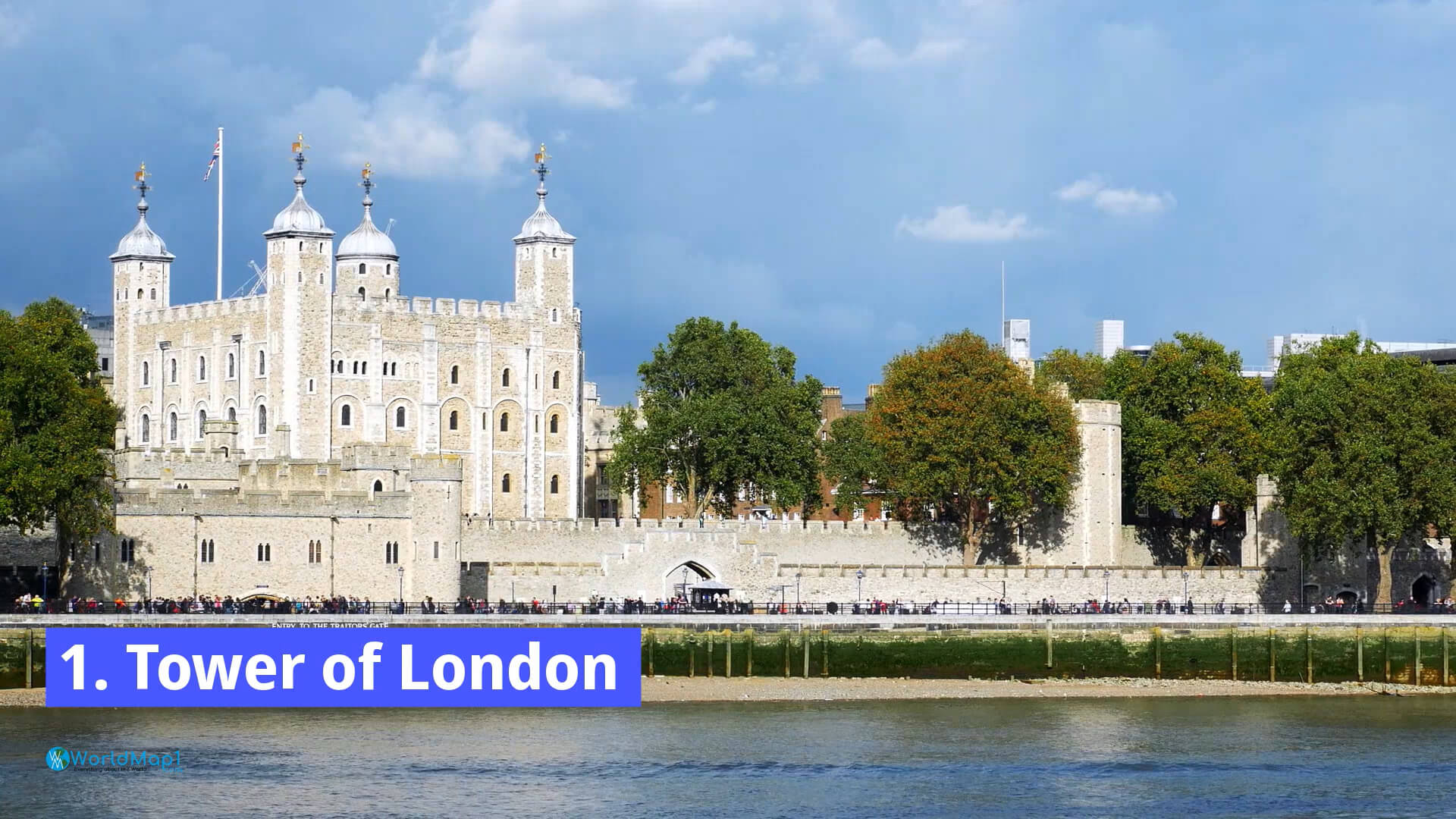
The Tower of London is a historic castle in London, located on the north bank of the River Thames, between the City of London and the borough of Tower Hamlets. The Tower was founded by William the Conqueror in 1066 as a fortress and palace.
Tower Bridge
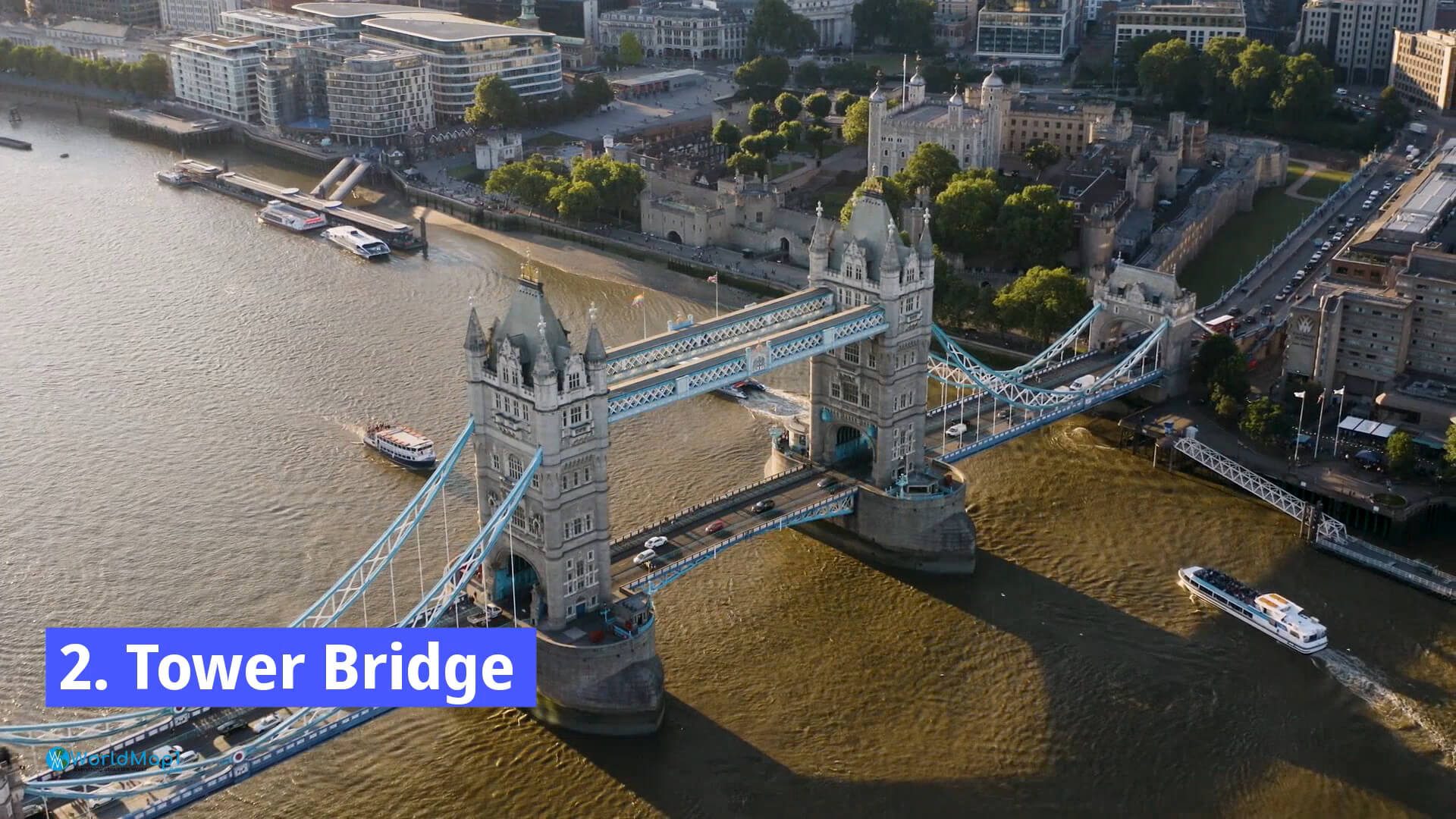
The Tower Bridge is a combined bascule and suspension bridge in London, England. It crosses the River Thames close to the Tower of London and has become an iconic symbol of London. The bridge consists of two bridges with each separate part considered its own structure, but they are connected by a walkway.
The Tower Bridge was designed by architects Sir Horace Jones and John Wolfe-Barry and built between 1886–1894. The bridge was opened by Queen Victoria on 30 June 1894 when she threw a ceremonial switch for the electric lights illuminating both banks of the river as well as all four towers and lifting span. The original design included four large iron towers at each end of an iron truss arch; however, this design was too heavy for its foundations belonging to London Bridge Railway Station so these were removed from plans before construction had started there—hence only three towers were ever built in their place: two on one side (one being narrower than the other) while one larger tower sits upon land belonging solely to Tower Bridge itself (with no railway station beneath).
Churchill War Rooms
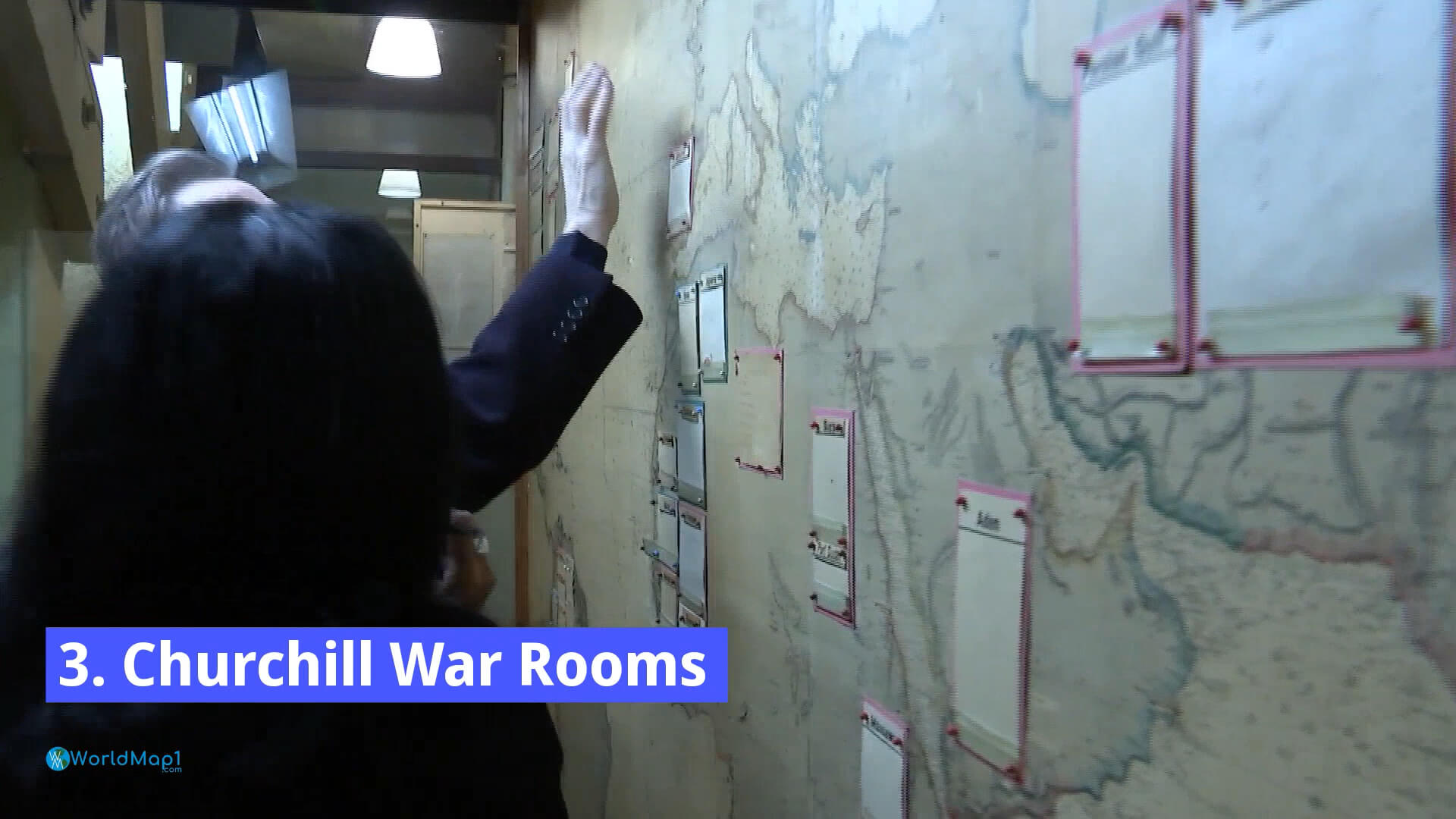
Churchill War Rooms is a historical museum in London that was built during World War II. It's located in the basement of the former Church House, which was also used as an underground bunker during World War II. The museum displays Prime Minister Winston Churchill's role in the war effort, including his military strategies and political leadership. The museum is very popular with tourists and locals alike, who come to learn about this period of history from its original source material.
National Gallery
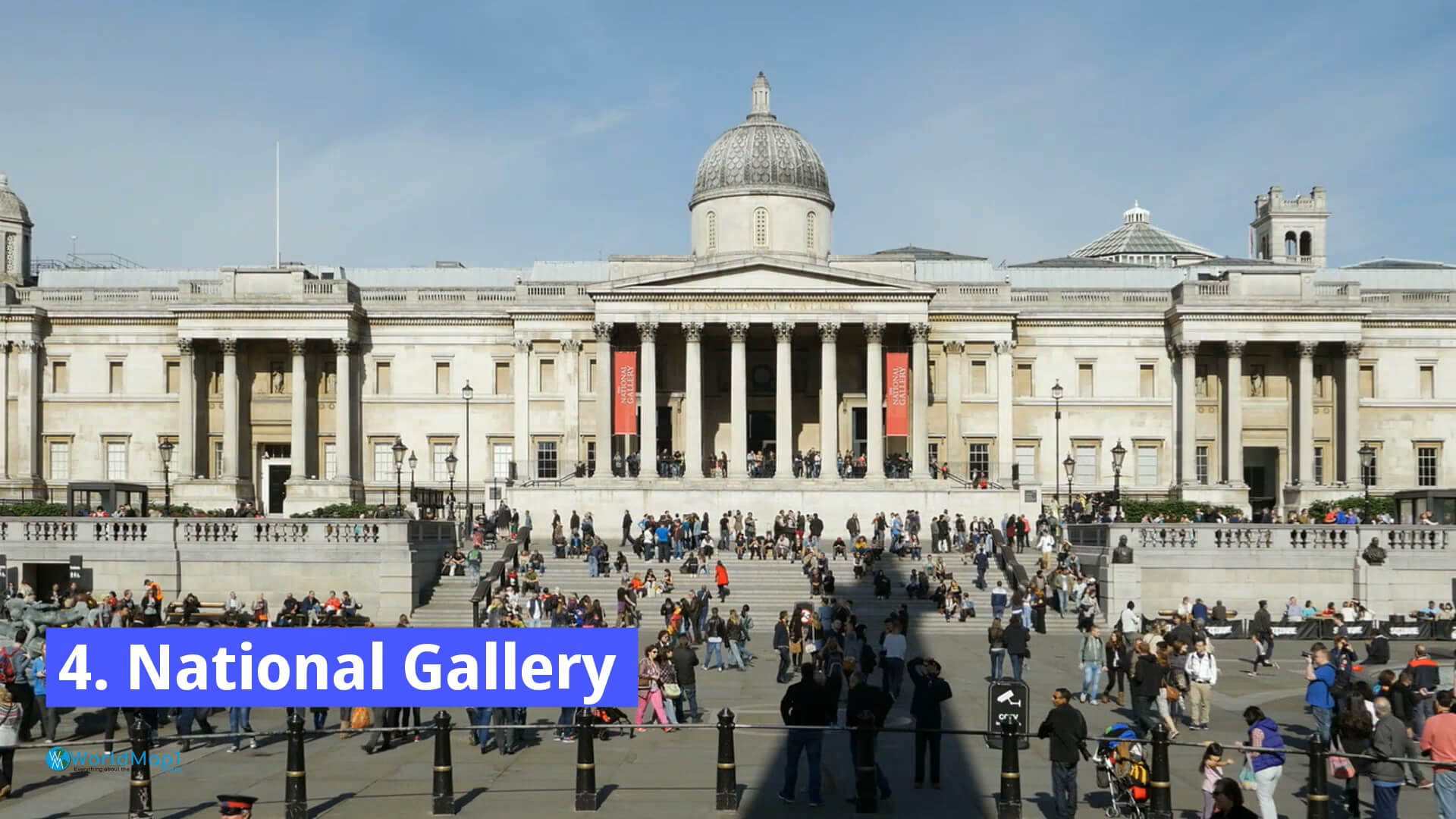
The National Gallery is one of the world's largest art museums. It has a permanent collection of over 2,300 paintings including those by Monet, Rembrandt, and Van Gogh. The national gallery is located in Trafalgar Square. It was founded in 1824 by King George IV with the purpose of showing his own private collection to the public.
The British Museum
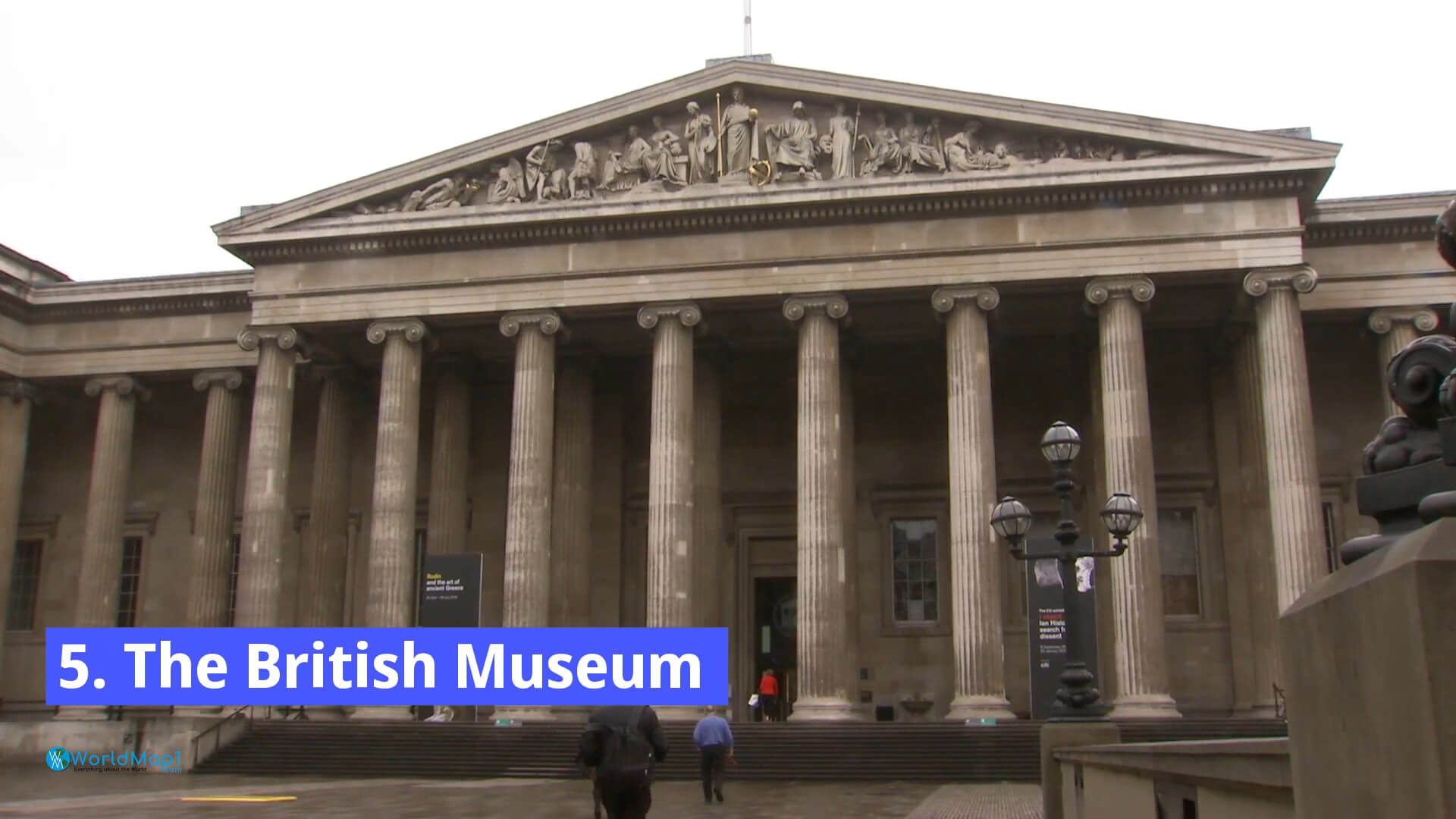
The British Museum is one of the largest museums in the world, with over eight million objects in its collection. It's also one of London's most popular attractions, with millions of visitors every year. The museum opened to the public in 1759 and is located in Bloomsbury, Central London.
The museum houses a huge variety of things from all over the world under one roof; this includes ancient artefacts from Egypt and Mesopotamia as well as displays about natural history and ethnography (the study of human cultures). There are also galleries dedicated to art including works by Michelangelo and Leonardo da Vinci!
The museum does free entry for everyone (except on special occasions), so there's no excuse not to go! It's open daily from 10 AM until 6 PM except Mondays when it opens at 12:30 PM
Westminster Abbey
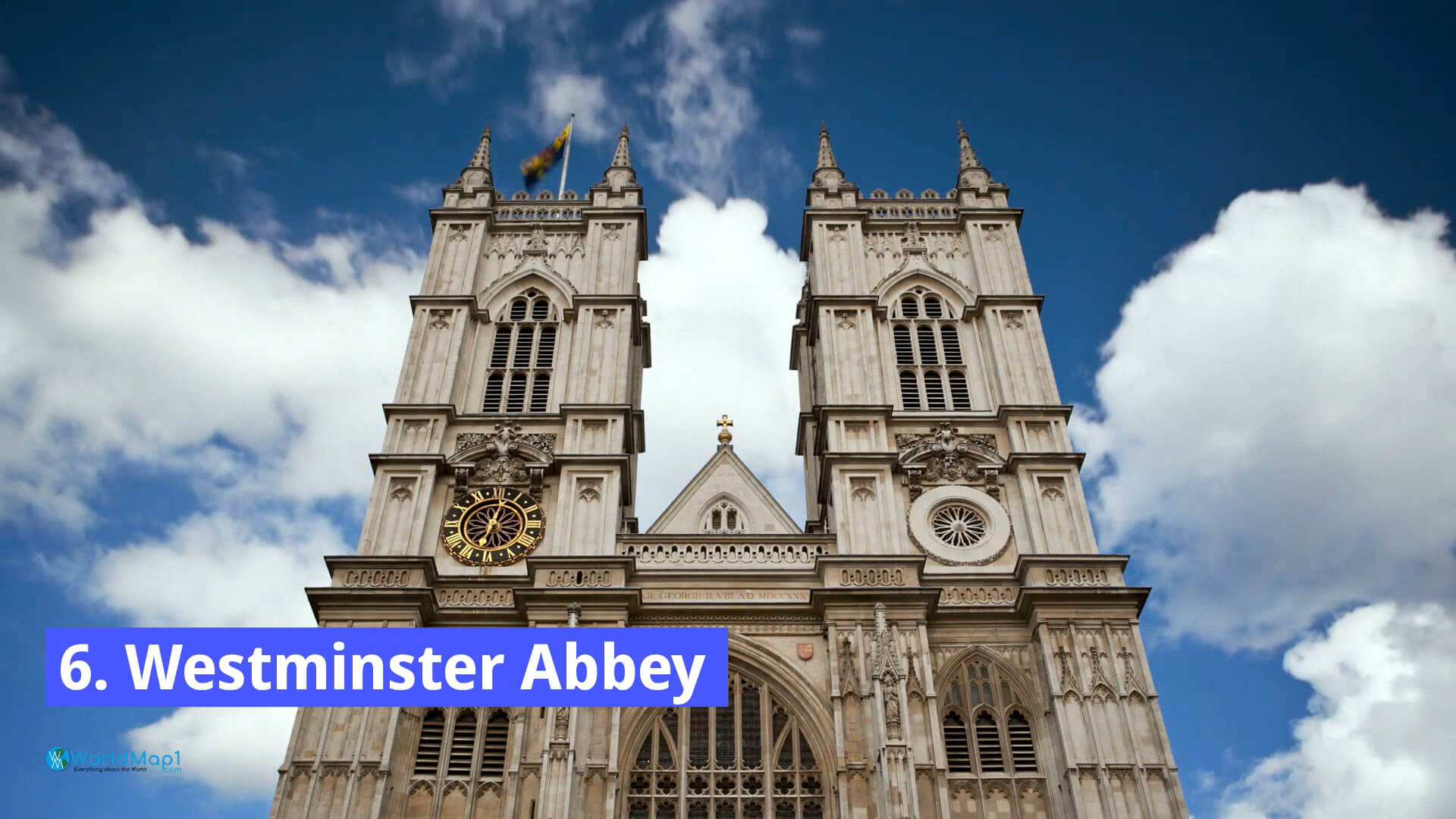
Westminster Abbey is one of the most famous attractions in London. Located on the north side of the Thames River, it's a short walk from Big Ben and Parliament. The abbey has been a place of Christian worship since at least 1065 when Edward the Confessor was buried there after his death in 1066.
It's also where Prince William and Kate Middleton were married in 2011! There are lots of things to do here, including visiting St. Peter's Chapel (where William and Kate were married), attending Sunday service if you're so inclined, or just walking around admiring how beautiful everything is. For an extra fee you can climb up to Poets' Corner—the resting place for many famous writers like Charles Dickens and Lord Byron—and see all their tombs as well as those belonging to other British monarchs who have been buried here over time; this includes Elizabeth I as well as Henry VIII and Jane Seymour (one of his wives). You'll find other historic artifacts too—like stained glass windows depicting various saints (from Peter through John) along with various Biblical scenes from both Old Testament times as well as New Testament ones like Jesus' resurrection from the dead after dying on Good Friday two thousand years ago during Passover season!
Outside you'll see plenty more sights such as Westminster Bridge which spans across into Southwark Borough near Tower Bridge Road/Tower Hill station where trains run by Thameslink go directly into Waterloo East Station near Buckingham Palace Road/Victoria Street which takes you straight into Victoria Station located near Victoria Station Terminus Railway Station where trains run by Southern Railway take commuters from London Victoria Station Terminus Railway Station back home again after work hours.
Buckingham Palace
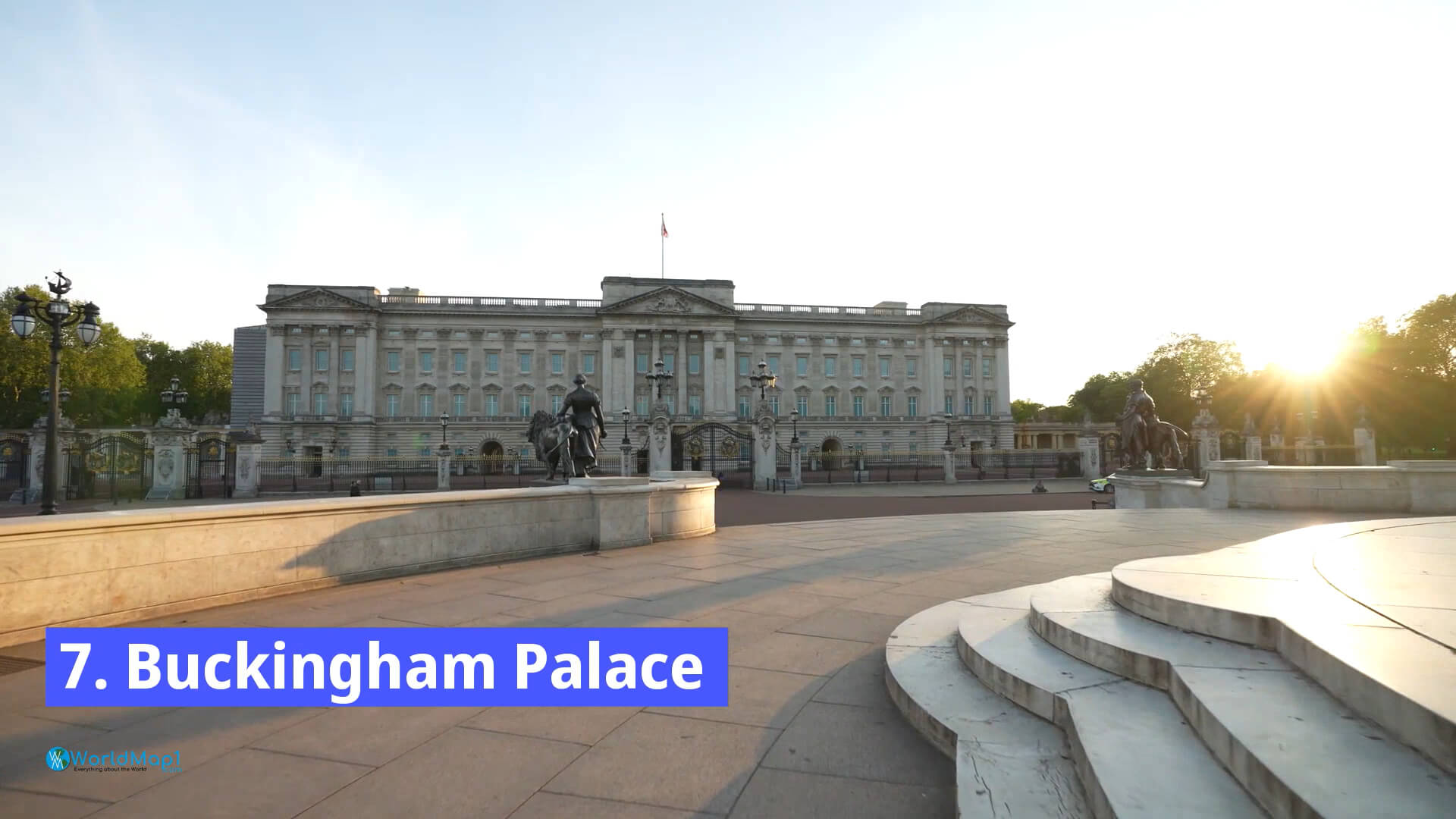
Buckingham Palace, the Queen's official residence and London's most famous home.
The palace has several different attractions to offer you, from visiting the State Apartments, to seeing the Royal Collection or even just walking in the gardens. The Royal Mews is also worth a visit because of its huge collection of carriages, many dating back centuries. In addition to this, there are also exhibitions on various topics related to royal life at Buckingham Palace throughout the year!
Houses of Parliament
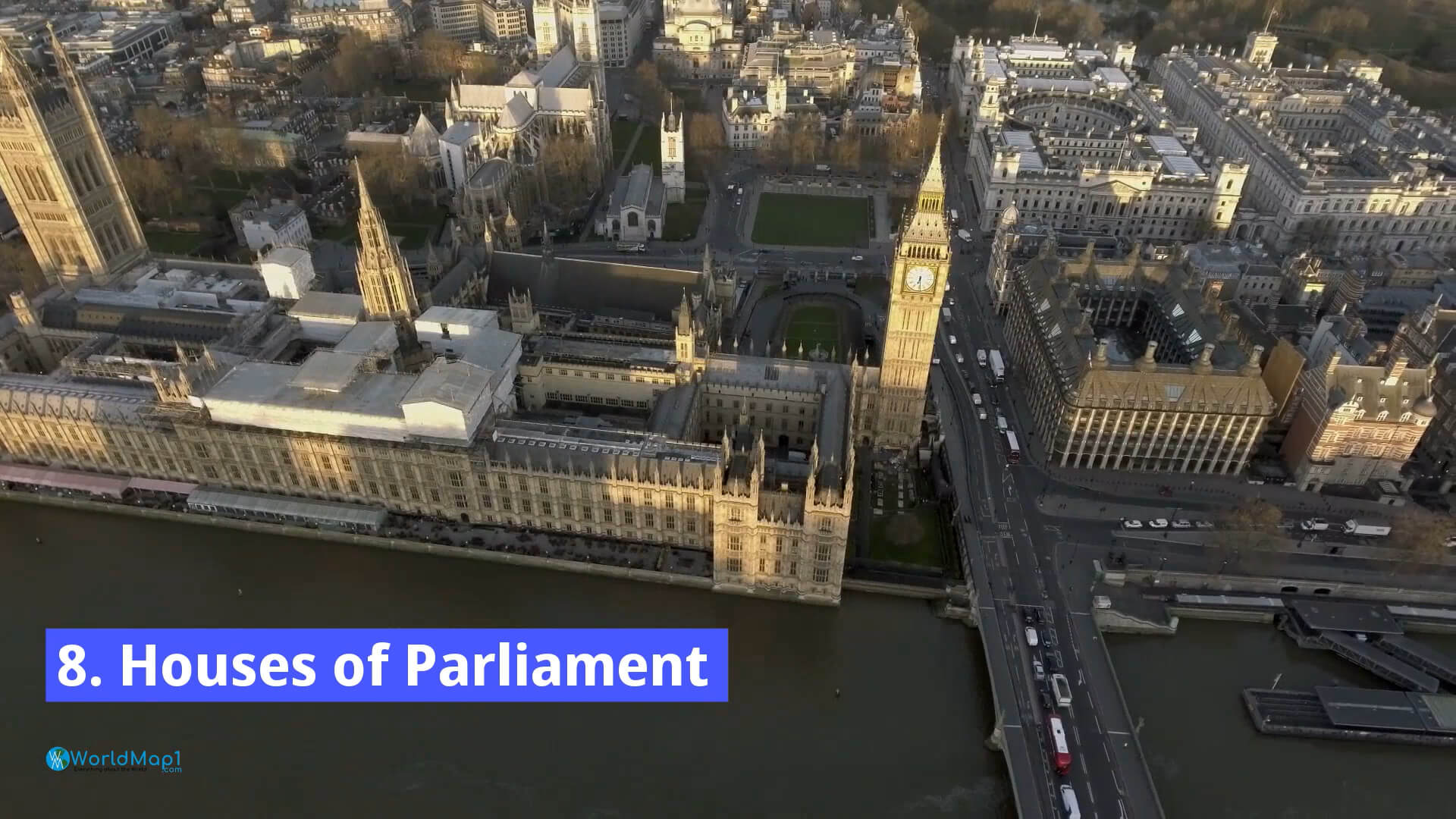
The House of Parliament is the most famous building in London, and it's easy to see why. Located on the banks of the River Thames, it has been a symbol of democracy since its completion in 1852. It's home not only to both houses of parliament but also several other important institutions such as the Department for Environment, Food, and Rural Affairs (DEFRA) and Scotland Office.
You can get a taste of what it would be like to walk through this historic building with an audio tour that gives you an overview of its history and architecture while walking through St Stephen's Hall. Visitors will hear about how each parliamentary session is opened by Black Rod knocking on the door before entering with his staff which he then lays down at their feet in recognition that they are now officially open for business!
Hyde Park
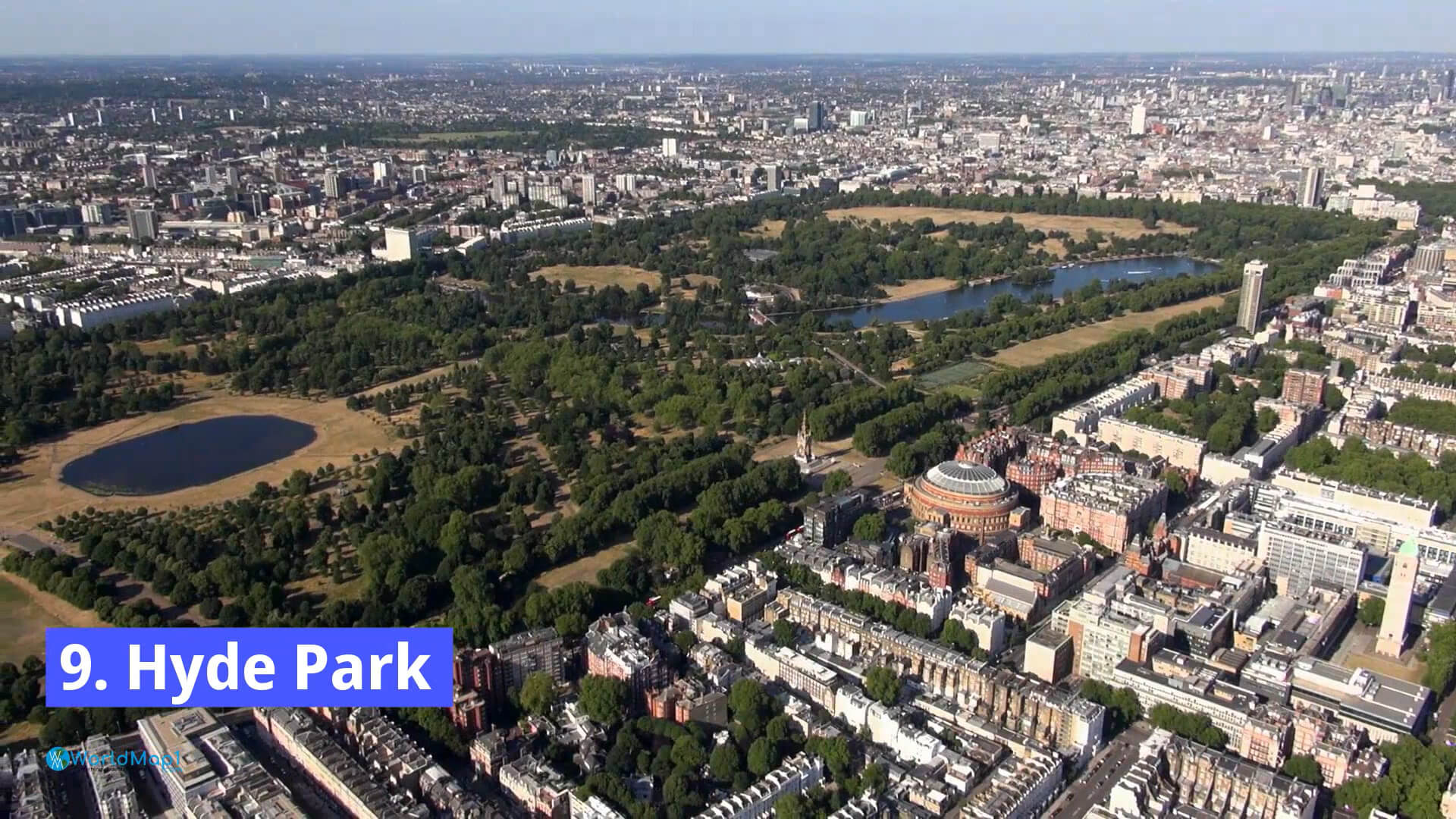
Hyde Park is a large urban park in the central and most populous part of London, England. It is the largest urban park in the capital, covering 140 hectares (350 acres).
It is divided into two parts the Serpentine and the Long Water.
St. Paul's Cathedral
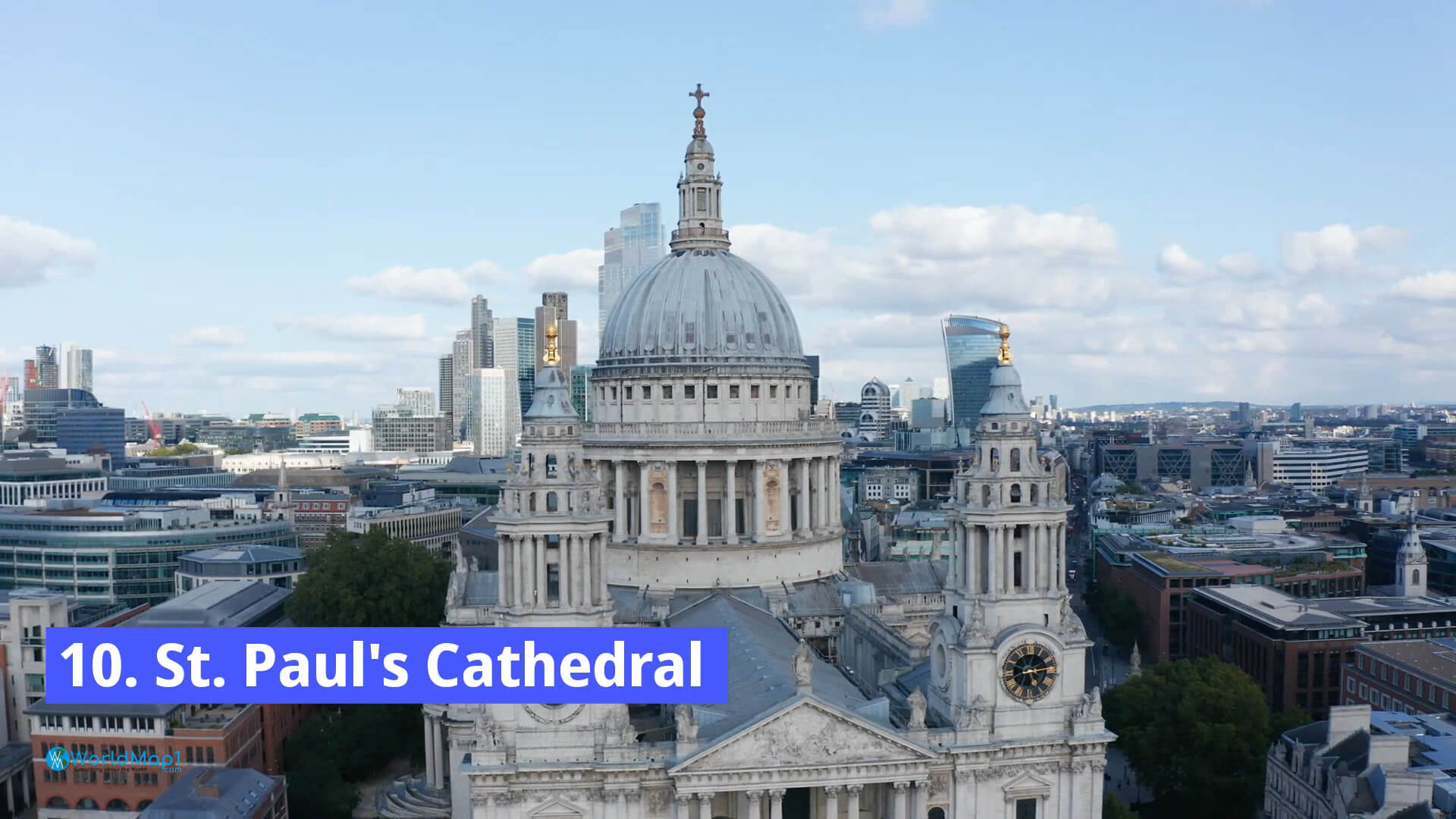
If you're looking for a place to get your history fixed, head over to St. Paul's Cathedral. Built-in 1710, it's the tallest cathedral in the UK and one of London's oldest buildings. It also serves as a popular tourist attraction and religious center for Christians throughout the world. The building is easily recognizable by its distinctive dome, which has been featured in many movies and television shows including Harry Potter and Indiana Jones.
The cathedral is located on Ludgate Hill (near Tower Bridge), so it makes a good starting point if you want to explore some other sights along that side of town. And speaking of sightseeing: if you've ever seen photos or footage of this historic landmark before visiting London yourself—or even just read about how famous it is among travelers—you probably noticed how crowded St. Paul's gets during popular events like New Year's Eve celebrations! To avoid getting stuck waiting in line with thousands of other people trying to get inside too.
There are many ways to experience London, but here are some of the most famous places to see there.
You can see many amazing attractions in London. Here are some of the most famous places to see there:
- V&A - Victoria and Albert Museum
- Borough Market
- Up at The O2
- St. James's Park
- Covent Garden
- Camden Market
- The View from The Shard
- Sky Garden
- Regent's Park
Conclusion
There are many ways to experience London, but here are some of the most famous places to see there. These top attractions in London offer a great way for people from all over the world to learn about what makes this city so great!
Please view more about United Kingdom, and London
UK UK Map London Map 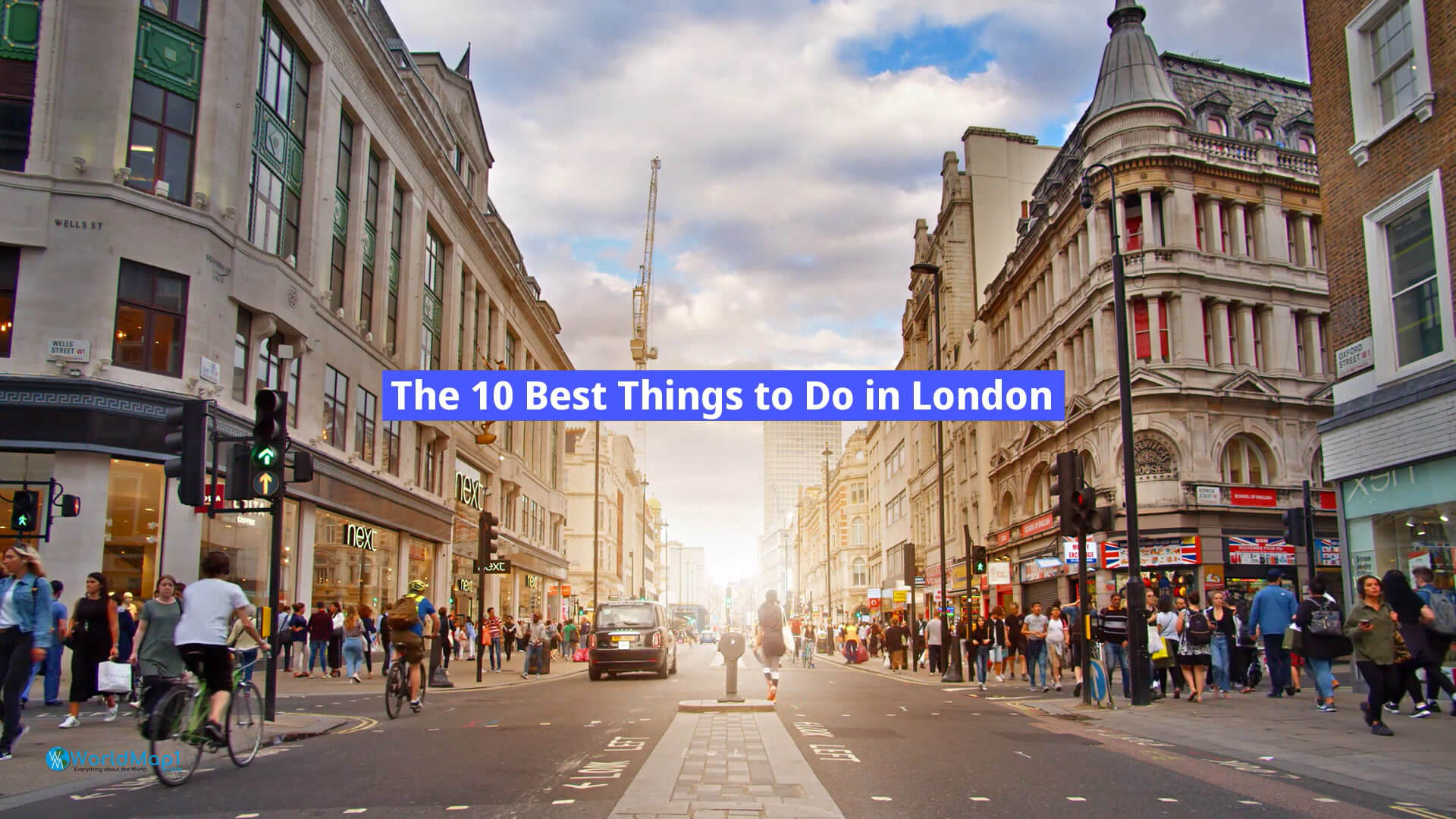
 The Tower of London is a historic castle in London, located on the north bank of the River Thames, between the City of London and the borough of Tower Hamlets. The Tower was founded by William the Conqueror in 1066 as a fortress and palace.
The Tower of London is a historic castle in London, located on the north bank of the River Thames, between the City of London and the borough of Tower Hamlets. The Tower was founded by William the Conqueror in 1066 as a fortress and palace.  The Tower Bridge is a combined bascule and suspension bridge in London, England. It crosses the River Thames close to the Tower of London and has become an iconic symbol of London. The bridge consists of two bridges with each separate part considered its own structure, but they are connected by a walkway.
The Tower Bridge is a combined bascule and suspension bridge in London, England. It crosses the River Thames close to the Tower of London and has become an iconic symbol of London. The bridge consists of two bridges with each separate part considered its own structure, but they are connected by a walkway.  Churchill War Rooms is a historical museum in London that was built during World War II. It's located in the basement of the former Church House, which was also used as an underground bunker during World War II. The museum displays Prime Minister Winston Churchill's role in the war effort, including his military strategies and political leadership. The museum is very popular with tourists and locals alike, who come to learn about this period of history from its original source material.
Churchill War Rooms is a historical museum in London that was built during World War II. It's located in the basement of the former Church House, which was also used as an underground bunker during World War II. The museum displays Prime Minister Winston Churchill's role in the war effort, including his military strategies and political leadership. The museum is very popular with tourists and locals alike, who come to learn about this period of history from its original source material.  The National Gallery is one of the world's largest art museums. It has a permanent collection of over 2,300 paintings including those by Monet, Rembrandt, and Van Gogh. The national gallery is located in Trafalgar Square. It was founded in 1824 by King George IV with the purpose of showing his own private collection to the public.
The National Gallery is one of the world's largest art museums. It has a permanent collection of over 2,300 paintings including those by Monet, Rembrandt, and Van Gogh. The national gallery is located in Trafalgar Square. It was founded in 1824 by King George IV with the purpose of showing his own private collection to the public.  The British Museum is one of the largest museums in the world, with over eight million objects in its collection. It's also one of London's most popular attractions, with millions of visitors every year. The museum opened to the public in 1759 and is located in Bloomsbury, Central London.
The British Museum is one of the largest museums in the world, with over eight million objects in its collection. It's also one of London's most popular attractions, with millions of visitors every year. The museum opened to the public in 1759 and is located in Bloomsbury, Central London.  Westminster Abbey is one of the most famous attractions in London. Located on the north side of the Thames River, it's a short walk from Big Ben and Parliament. The abbey has been a place of Christian worship since at least 1065 when Edward the Confessor was buried there after his death in 1066.
Westminster Abbey is one of the most famous attractions in London. Located on the north side of the Thames River, it's a short walk from Big Ben and Parliament. The abbey has been a place of Christian worship since at least 1065 when Edward the Confessor was buried there after his death in 1066.  Buckingham Palace, the Queen's official residence and London's most famous home.
Buckingham Palace, the Queen's official residence and London's most famous home.  The House of Parliament is the most famous building in London, and it's easy to see why. Located on the banks of the River Thames, it has been a symbol of democracy since its completion in 1852. It's home not only to both houses of parliament but also several other important institutions such as the Department for Environment, Food, and Rural Affairs (DEFRA) and Scotland Office.
The House of Parliament is the most famous building in London, and it's easy to see why. Located on the banks of the River Thames, it has been a symbol of democracy since its completion in 1852. It's home not only to both houses of parliament but also several other important institutions such as the Department for Environment, Food, and Rural Affairs (DEFRA) and Scotland Office.  Hyde Park is a large urban park in the central and most populous part of London, England. It is the largest urban park in the capital, covering 140 hectares (350 acres).
Hyde Park is a large urban park in the central and most populous part of London, England. It is the largest urban park in the capital, covering 140 hectares (350 acres).  If you're looking for a place to get your history fixed, head over to St. Paul's Cathedral. Built-in 1710, it's the tallest cathedral in the UK and one of London's oldest buildings. It also serves as a popular tourist attraction and religious center for Christians throughout the world. The building is easily recognizable by its distinctive dome, which has been featured in many movies and television shows including Harry Potter and Indiana Jones.
If you're looking for a place to get your history fixed, head over to St. Paul's Cathedral. Built-in 1710, it's the tallest cathedral in the UK and one of London's oldest buildings. It also serves as a popular tourist attraction and religious center for Christians throughout the world. The building is easily recognizable by its distinctive dome, which has been featured in many movies and television shows including Harry Potter and Indiana Jones. 